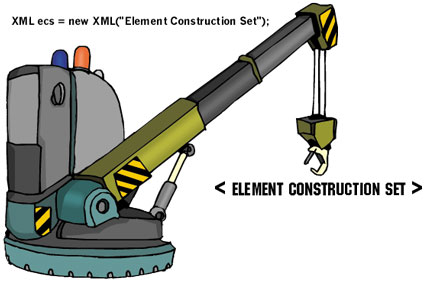



The Element Construction Set is designed from the bottom up to be an object oriented abstraction of tag generation. This document describes how the framework generates tags.

The image above represents the object layout of the framework. As you can see, the two core classes which make up 90% of the framework internals are the Element and ElementAttributes classes. The ElementAttributes class contains set* methods that are global for all HTML 4.0 elements, such as setTitle(), setID(), setClass(), etc. This is where the output() methods that generate the actual tags reside. It also implements the AttributeRegistry interface. The Element class implements the ElementFactory interface. This is where the toString() methods reside. The toString() methods simply call the output() methods within the ElementAttributes class.
There are two different types of Elements, there are SinglePartElements (SPE) and MultiPartElements (MPE). The difference is that SPE's never have a closing portion of their tag. For example, an <IMG> tag does not have a </IMG> tag, but a <HTML> tag has a </HTML> tag. When creating your own elements classes, it is generally a simple decision to use either SPE or MPE as the class that you will be extending.
Implementing your own tags is relatively simple, first you should decide if you want a SPE or a MPE. Once you have decided that, we suggest that you copy an existing element and modify it for your own needs. Generally, the instance constructor (the part at the top of the class file that is only in { } brackets) is the location of the definition of the tag:
{
setElementType("th");
}

The Document class is a wrapper for the Html, Head, Title and Body elements. It allows you to easily create Html "documents" for use in your application. This class is not intended to in any way represent the Document object model (ie: DOM), it is simply a helper class.
Copyright (c) 1999
The Java Apache Project.
$Id$
All rights reserved.